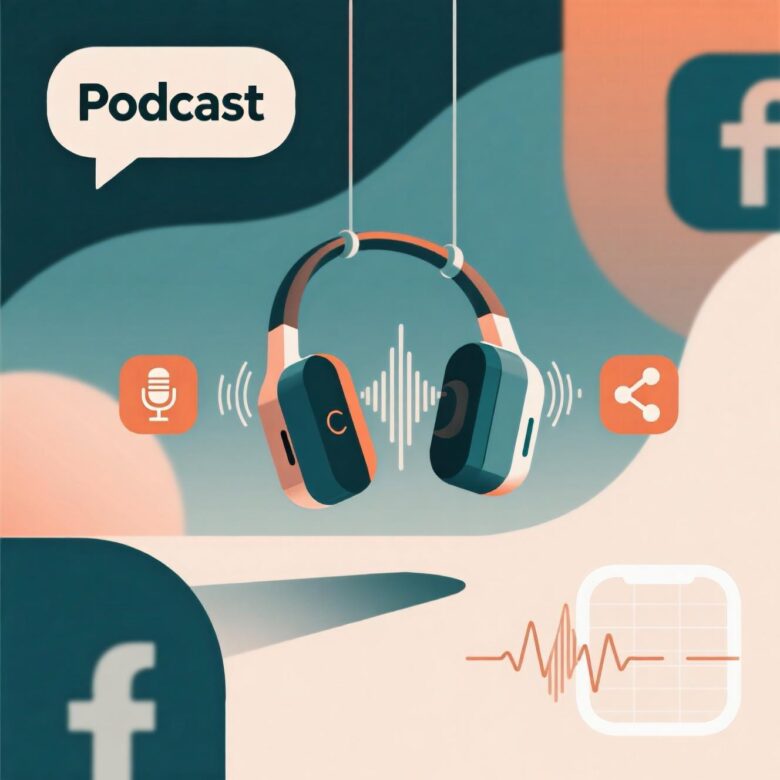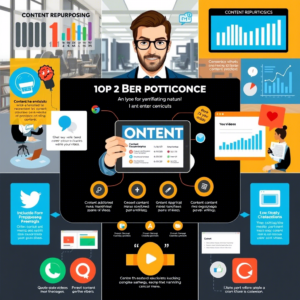Imagine this: you’re walking through the park, riding the subway, or cooking dinner—and instead of scrolling through endless videos or photos, you’re listening to a compelling story, a deep conversation, or an insightful podcast snippet shared directly on your favorite social platform. No flashy visuals. No autoplaying reels. Just sound.
This isn’t the future—it’s happening right now. Audio-only content is surging across social media, reshaping how we connect, consume information, and build communities online. From Clubhouse’s explosive debut to Twitter Spaces, Spotify Greenroom, and voice notes on Instagram and WhatsApp, the world is tuning in—literally.
But why the sudden shift toward sound? In an age dominated by screens and visual overload, audio offers something rare: presence without pressure. It allows for multitasking, intimacy, and accessibility in ways that video often can’t match. People are craving authenticity, and sometimes, the most human thing you can share is your voice.
In this article, we’ll explore why audio-only content is gaining momentum on social platforms. We’ll dive into the psychological appeal of voice, the rise of audio-first features, how creators are leveraging this trend, and what it means for the future of digital communication. Whether you’re a content creator, marketer, or simply someone trying to stay informed, understanding this shift is key to navigating the evolving digital landscape.
So, put on your headphones (if you haven’t already), and let’s listen in.
1. The Psychology of Voice: Why We Connect Through Sound
There’s something uniquely powerful about the human voice. Unlike text, which can feel cold or ambiguous, and unlike video, which demands attention and performance, voice strikes a balance between intimacy and ease.
When we hear someone speak, our brains process not just the words—but tone, rhythm, emotion. A slight pause, a chuckle, or a sigh can convey more than paragraphs of text ever could. This emotional resonance is why audio content feels so personal, even when it’s broadcast to thousands.
Studies show that listening to a voice activates areas of the brain linked to empathy and social connection. In fact, research from the University of California found that people perceive voices as more trustworthy than written messages, especially when the speaker shows vulnerability or authenticity.
Think about the last time you listened to a heartfelt voicemail or a friend’s voice note. Didn’t it feel more “real” than a text message? That’s the power of audio. It bypasses the filters we often put up in written communication and delivers raw, unedited humanity.
And in a world where social media has become synonymous with curated perfection—flawless selfies, polished reels, and highlight reels—audio-only content offers a refreshing contrast. It doesn’t require makeup, lighting, or editing skills. You don’t need to look good—you just need to be.
Platforms like Clubhouse tapped into this need for authenticity early on. During its peak in 2021, users flocked to live audio rooms to hear unscripted conversations on everything from mental health to entrepreneurship. There were no likes, no comments, no visual distractions—just voices connecting in real time.
Even now, as Clubhouse has cooled, the demand for that kind of genuine interaction hasn’t disappeared. It’s evolved. Audio is no longer a niche format; it’s becoming a core part of how we communicate online.
So, the question isn’t if audio will stay relevant—but how deeply it will integrate into our daily digital lives.
2. The Rise of Audio-First Features on Major Platforms
It’s not just niche apps like Clubhouse driving the audio wave—the giants are all in. Over the past few years, every major social platform has rolled out or expanded audio-focused features, signaling a strategic shift toward sound.
Let’s break down what’s happening across the board:
Twitter (now X) launched Twitter Spaces, allowing users to host or join live audio conversations. These rooms are easy to access, integrate with existing followers, and can be recorded and shared—making them ideal for real-time discussions, AMAs (Ask Me Anything), and community building.
Instagram introduced Voice Notes in Direct Messages, letting users send short audio clips instead of typing. It’s a small feature, but one that’s widely used—especially among younger users who prefer speaking over texting.
Facebook added Live Audio Rooms and podcast support, enabling creators to monetize spoken content and engage audiences without needing video equipment.
Spotify, already a leader in audio with its podcast ecosystem, acquired Greenroom (formerly Locker Room) to compete with Clubhouse, rebranding it as Spotify Live. Now, users can join live audio shows directly within the Spotify app.
Even LinkedIn has started testing audio events, recognizing that professionals want more conversational, less formal ways to network and share knowledge.
What’s clear is that audio is no longer an afterthought—it’s a priority. These platforms aren’t just adding features; they’re redesigning user experiences around voice.
And the timing makes sense. After years of video dominance—TikTok, YouTube Shorts, Reels—users are experiencing content fatigue. The pressure to create visually perfect content is high, and not everyone wants to be on camera. Audio lowers the barrier to entry. You can speak from your car, your bedroom, or even your bathroom—no setup required.
Moreover, audio is inclusive. It’s easier for people with visual impairments, those in low-bandwidth areas, or users who simply prefer listening over watching. This accessibility factor is a major reason why audio is gaining traction across diverse demographics.
As one creator put it: “I used to stress over lighting and angles. Now, I just hit record and talk. My audience connects with my voice, not my face.”
3. How Creators Are Leveraging Audio to Build Deeper Connections
For content creators, audio-only formats are opening up new avenues for engagement, authenticity, and monetization.
Unlike video, which often requires scripting, editing, and production, audio allows for spontaneity. A live conversation can go off-script, explore unexpected tangents, and still feel valuable. This flexibility is a breath of fresh air for creators tired of the “content treadmill.”
Take podcasters, for example. Many have expanded beyond traditional podcast platforms by sharing audio clips on social media. A 60-second excerpt from a deep interview can spark curiosity, drive traffic to full episodes, and humanize the host in a way text captions can’t.
But it’s not just podcasters. Influencers, coaches, educators, and entrepreneurs are using audio to:
- Host live Q&A sessions (e.g., “Ask me anything about starting a business”)
- Share daily motivation or reflections via voice notes
- Create audio newsletters or updates for subscribers
- Build private audio communities where members pay for access
One growing trend is audio storytelling. Platforms like Substack and Bulletin now support voice posts, allowing writers to narrate their articles aloud. This adds emotional depth and helps reach audiences who prefer listening while commuting, exercising, or doing chores.
Another powerful use case is mental health advocacy. Therapists and wellness coaches are using audio rooms to host safe, anonymous discussions about anxiety, burnout, and relationships. The lack of video reduces performance anxiety, making it easier for people to open up.
And let’s not forget language learning. Teachers are using audio features to help students practice pronunciation, engage in conversations, and build confidence—all without the pressure of being on camera.
The bottom line? Audio humanizes digital content. It turns creators from distant influencers into real people with voices, emotions, and stories. And in an era where trust is scarce, that connection is priceless.
4. The Practical Benefits of Audio Content for Audiences and Brands
Beyond emotional connection, audio-only content offers real, practical advantages—for listeners, creators, and brands alike.
Let’s start with convenience. Audio is inherently multitask-friendly. You can listen while driving, working out, cooking, or folding laundry. Unlike video, it doesn’t demand your eyes. This makes it perfect for busy lifestyles.
A 2023 Edison Research report found that the average American spends over 4 hours per day consuming audio content—mostly music and podcasts. Now, with social audio, that time is expanding to include live conversations, news updates, and community chats.
For brands, audio presents a unique opportunity to engage audiences in a less intrusive way. Think about it: a 90-second voice message from a CEO sharing company values feels more personal than a corporate email or a polished ad.
Some companies are already experimenting:
- Nike hosted live audio discussions on Twitter Spaces about athlete mental health.
- HubSpot uses LinkedIn audio events to share marketing tips with professionals.
- Small businesses send voice notes to customers as thank-you messages, boosting loyalty.
Audio also supports accessibility and inclusion. For people with visual impairments, dyslexia, or learning differences, listening is often easier than reading. And for non-native speakers, hearing natural speech patterns can improve comprehension.
From a content strategy standpoint, audio is also more sustainable. It’s faster to produce, requires less storage, and generates lower data usage—important for global audiences with limited internet access.
And let’s talk about SEO and discoverability. While audio itself isn’t searchable by engines, platforms are catching up. YouTube now auto-generates captions for uploaded audio. Spotify provides transcripts for podcasts. And when creators share audio clips with descriptive captions or blog posts, they boost their visibility.
In short, audio isn’t just trendy—it’s practical, inclusive, and scalable. It meets people where they are, both physically and emotionally.
5. The Future of Social Audio: What’s Next?
So, where is all this heading? Is audio-only content just a passing phase, or is it here to stay?
The evidence points to long-term growth. While the initial hype around Clubhouse may have faded, the underlying demand for authentic, low-pressure communication hasn’t. If anything, it’s stronger.
Here’s what we can expect in the coming years:
More integration between audio and other formats. Imagine watching a video that seamlessly transitions into a live audio discussion. Or reading an article that includes a narrator’s voice clip. Hybrid content will become the norm.
AI-powered audio tools. Voice cloning, real-time translation, and smart transcription will make audio more accessible and easier to produce. Creators might record once and have their content automatically converted into multiple languages or formats.
Monetization expansion. Platforms will offer more ways for creators to earn from audio—through subscriptions, tips, sponsorships, and exclusive voice communities.
Rise of niche audio networks. We’ll see more private or invite-only audio groups focused on specific interests—investing, parenting, spirituality, or even fan clubs.
Greater emphasis on privacy and safety. As live audio grows, so do concerns about moderation, harassment, and data security. Platforms will need to invest in better tools to protect users.
Ultimately, the future of social audio isn’t about replacing video or text—it’s about expanding the ways we connect. Not every message needs to be seen. Sometimes, it just needs to be heard.
And as our digital lives become increasingly fast-paced and visually saturated, the simplicity of voice might be exactly what we need to slow down, listen deeply, and feel truly heard.
Conclusion: The Power of Listening in a Noisy World
We’ve covered a lot in this article—from the emotional power of the human voice to the strategic moves of tech giants, and from creator opportunities to the practical benefits for everyday users.
But here’s the big takeaway: audio-only content isn’t just a trend. It’s a return to something fundamental—conversation.
In a world where we’re constantly bombarded with images, notifications, and endless scrolling, audio offers a moment of pause. It invites us to close our eyes, focus on a voice, and truly listen. And in doing so, we rediscover connection.
Whether you’re a creator looking to build a more authentic audience, a brand wanting to humanize your message, or just someone who’s tired of the noise—give audio a try. Record a voice note. Join a live room. Share a story without a single image.
You might be surprised by how much deeper the conversation goes when you take the camera out of the equation.
So, what do you think? Have you tried using audio on social media? Would you host a live discussion or send voice messages to your audience? Drop a comment, share your thoughts, or send us a voice note—we’d love to hear your voice.
Because in the end, the most powerful content isn’t always the loudest. Sometimes, it’s the one that simply lets you be heard.




